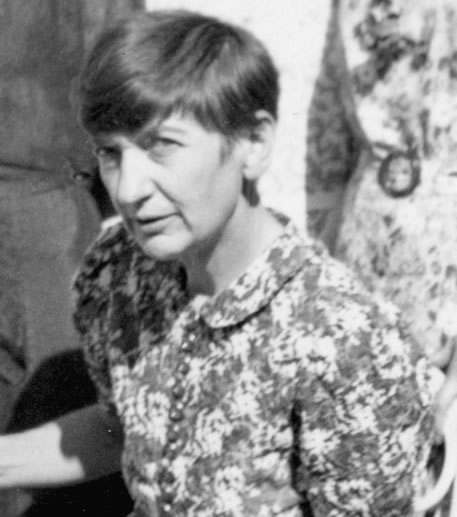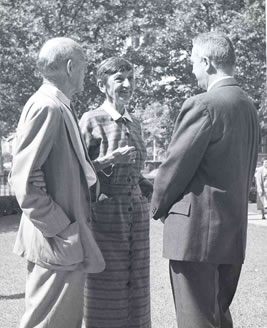 |
| “Ronzoni was noted for her humorous yet informative lecturing style.” |
Ethel Ronzoni was born August 21, 1890, in California. With no family financial support, she put herself through Mills College, earning a bachelor’s degree in 1913. She then earned a master’s degree from Columbia University in 1914. Ronzoni worked as an instructor at the University of Missouri-Columbia for several years during World War I prior to earning a doctorate in physiology from the University of Wisconsin in 1923.
Ronzoni’s special research interest was carbohydrate metabolism. She also conducted research on muscle biochemistry, steroid hormones, and amino acid metabolism.
Ronzoni came to Washington University’s biochemistry department directly after completing her Ph.D. From 1923 to 1943, she was an assistant professor. During this period of time she ran the chemistry lab of the Department of Medicine and Barnes Hospital. In 1943 she was promoted to associate professor in biochemistry and remained in that position until she retired in 1959. Post World War II, she switched to neuropsychiatry and ran the lab in the Department of Psychiatry for Edward Gildea, M.D. She was a member of the Society of Biological Chemistry.
 |
| George Bishop, Ethel Ronzoni, and Philip Shaffer |
Ethel Ronzoni appears to have been the first woman to join Washington University School of Medicine’s academic faculty, preceding Mildred Trotter by one year. Like Trotter, Ronzoni was a memorable teacher, and the two were considered the “sweethearts” of returning alumni. Ronzoni loved teaching and was noted for her humorous yet informative lecturing style. Always patient and supportive of students, she remarked in 1940 that the four or five women in the first-year medical class of 80 were like an “island amongst the sea of men.”
A gifted scientist, Ronzoni was also a victim of a then-widespread policy in which junior members of the department weren’t permitted to publish scientific papers until the chairman had approved them. Many of her critical findings sat on the chairman’s desk without discussion for years before she had permission to seek peer review.
Ethel Ronzoni was also fiercely independent long before such an attribute was respected. It wasn’t acceptable for a man and a woman to live together and not be married during that period of time, but she and George Bishop, professor of physiology and neurology, did so. This caused some consternation among executive faculty members, who urged her to marry Bishop. Eventually they did marry, but Ronzoni retained her maiden mane throughout her lifetime. The couple’s home became a celebrated meeting place for leading neuroscientists, labor leaders and black activists of the time.
